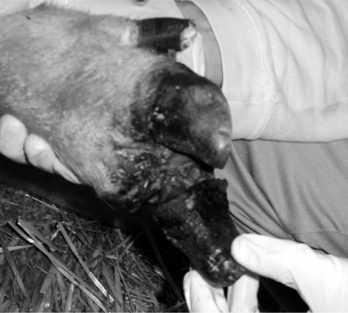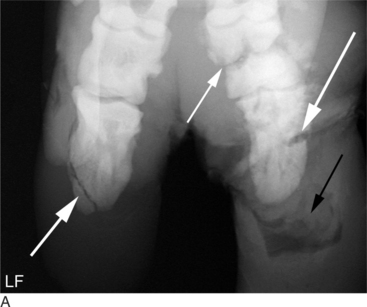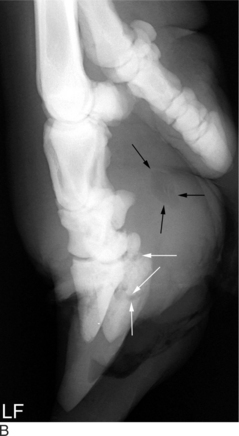Chapter 22 Surgery of the Swine Musculoskeletal System
Digit Amputation
Digit amputation is indicated when severe foot abscesses or septic arthritis of the interphalangeal joints have caused unmanageable damage to a single digit (Figure 22-1). Radiography, if elected, may show the extent of the lesion (Figure 22-2A and B). These injuries are most commonly caused by wounds from trauma on concrete flooring or metal side panels. The decision for amputation should not be delayed. Digit amputation will not be curative if the infection extends to the fetlock or more proximally on the limb. Also, the soundness of the opposite digit should be assessed to determine whether the pig will be able to ambulate on the remaining digit after amputation.

Figure 22-1 Pig with severe septic arthritis of the distal interphalangeal joint. Note that the claw is sloughing.
(Courtesy of Dr. Christopher Beinlich; Cornell University.)
Stay updated, free articles. Join our Telegram channel

Full access? Get Clinical Tree




